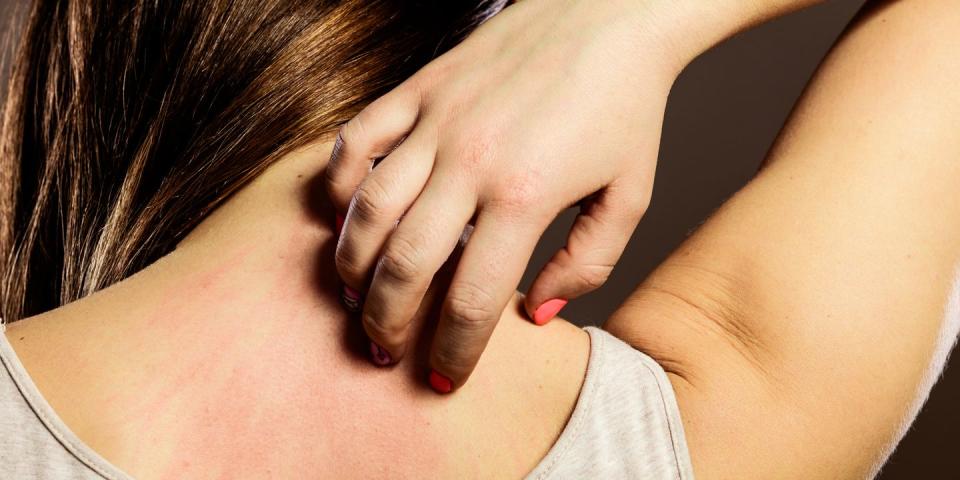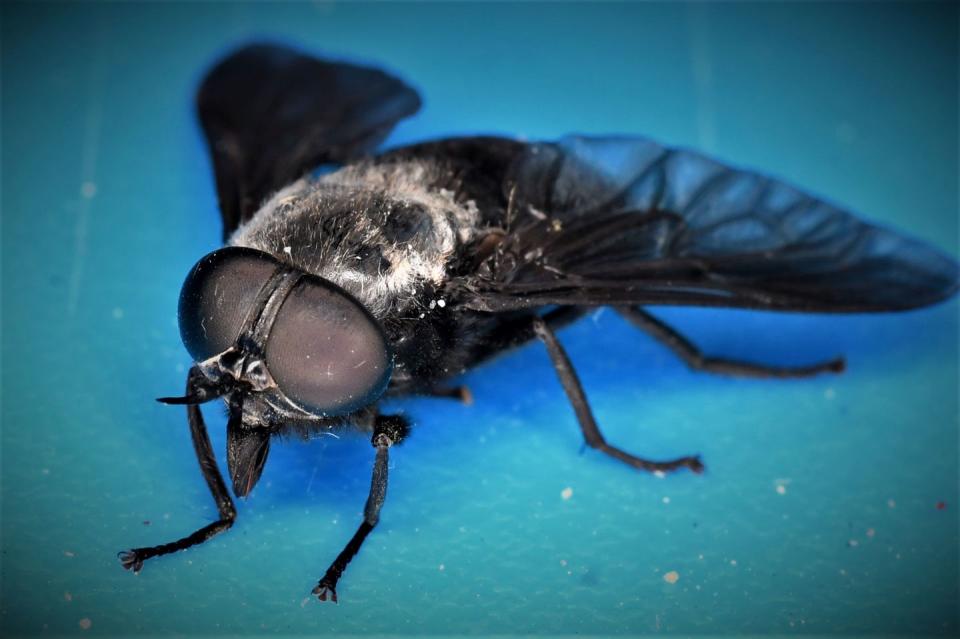How to tell when you've been bitten by a horsefly

Horseflies are a flying insect, whose bite can be painful and sometimes needs treatment. If you did not see it happen it can be difficult to identify what you were bitten or stung by, but if you're not sure – the treatment for most bites and stings is similar.
Dr Roger Henderson looks at horsefly bite symptoms, causes, treatment and prevention tips - plus when to seek medical advice:
What are horseflies?
Horseflies are flying insects, usually found in rural farming areas, that need to bite large animals (such as humans) as part of their life cycle. They look like large, dark flies that are bigger than a typical house fly being around an inch long. Their upper parts are white, usually with some vertical black lines present, and their lower parts are black. They are most active during the summer daylight hours – especially in humid conditions - and are attracted to moving dark objects.
It is only the female horsefly that bites as they need to drink blood to help support their egg production, and these can drink up to 200mg of blood in a few minutes by releasing substances that help stop the blood from clotting. Because of the scissor action of the way they bite, their bites are more painful than other insect bites.
The horsefly bite is usually red, surrounded by a raised area of skin known as a weal, and is tender and painful. However, horseflies are not usually harmful to humans and do not transmit severe diseases. They are only usually dangerous to horses.

Can a horsefly bite be serious?
Fortunately, the vast majority of horsefly bites cause few problems apart from occasionally becoming infected. However, a tiny number of people that are bitten may experience allergic reactions or even a severe reaction called anaphylaxis which is a medical emergency. Using a simple over the counter antihistamine treatment is usually sufficient to clear this.
Allergic horsefly bite symptoms may include:
Severe itching around the bite area
Dizziness
Wheezing
Temporary swelling in areas such as the eyes
More serious anaphylactic reaction to horsefly bite symptoms include:
Swelling of the tongue and throat
Severe swelling of the lips, face, hands or feet
Nausea and vomiting
Difficulty in breathing
If anaphylactic reaction occurs, urgent medical attention is required. If the affected person carries an auto-adrenaline injecting device this should be given immediately.
Horsefly bite treatment
Treating a horsefly bite is very much the same as treating any other insect bite, but they are slightly more likely to become infected because of the nature of the bite. General points to remember if you have been bitten include:
Do not scratch the bite, even if it is itchy. Scratching it is likely to make the bite worse and increase the risk of bacterial infection developing.
Do not use anything to clean the bite apart from soap and plain water. Home remedies such as bicarbonate of soda or diluted vinegar will not help.
Clean the bite area with clean cotton wool and plain warm water.
Use a cold compress on the bite for 5 minutes to help reduce any pain and swelling that may be present.
Horsefly bite prevention tips
Can you reduce the risk of being bitten by a horsefly? There are a number of practical ways of reducing your chances of being bitten:
Try to avoid walking in long grass – where horseflies can gather.
Keep your skin covered with long pants, socks and tops that are pale in colour.
Do not wear highly perfumed products or cosmetics as these may attract horseflies.
Try to stay away from water as this is where horseflies breed in summer.
Some people like to use insect repellents to keep them away but in fact there is little evidence these work in preventing horsefly bites. If they are used, always us a repellent that contains 50% DEET (diethyltoluamide).
Infected horsefly bite signs and symptoms
The typical signs of an infected horsefly bite include worsening redness and pain around the bite, usually with yellowish pus coming from the bite along with an unpleasant smell.
If you think your bite may be infected, seek a medical opinion as antibiotic treatment may be needed.
If a horsefly bite is not infected it usually settles in a few days but if it becomes infected it can take longer to heal. Infection does not normally occur straight away after being bitten, but usually two to three days later.
Last updated: 21-04-2021
You Might Also Like

